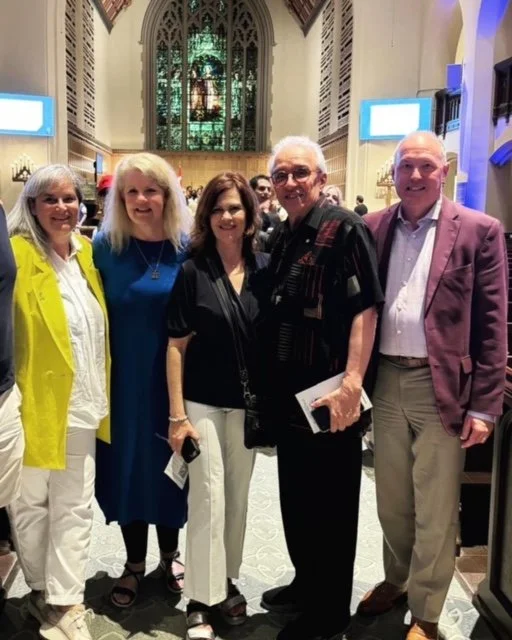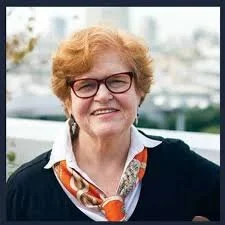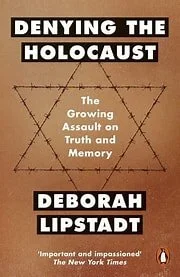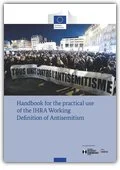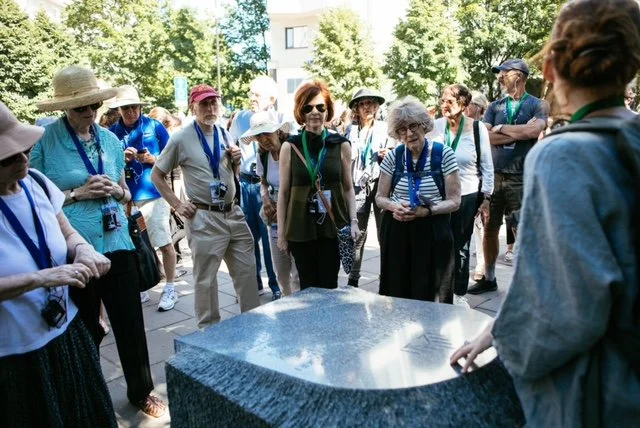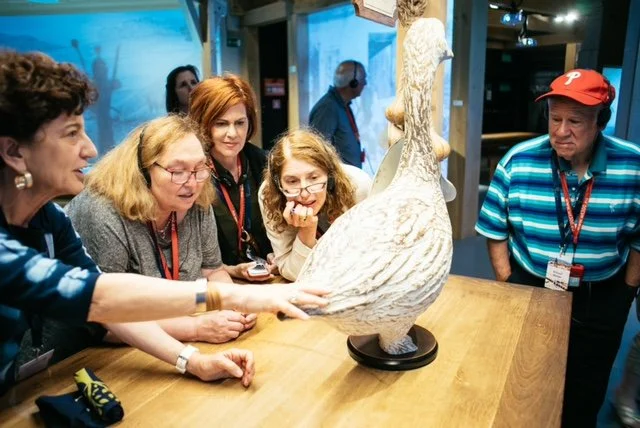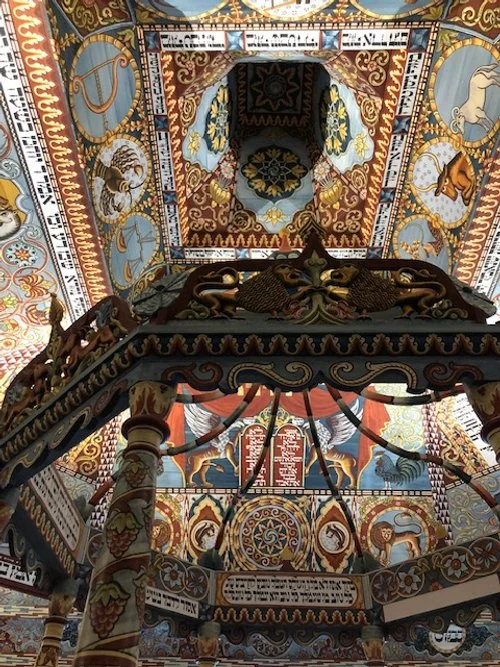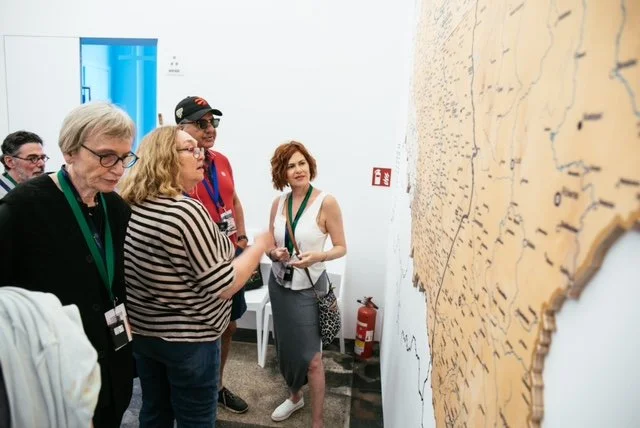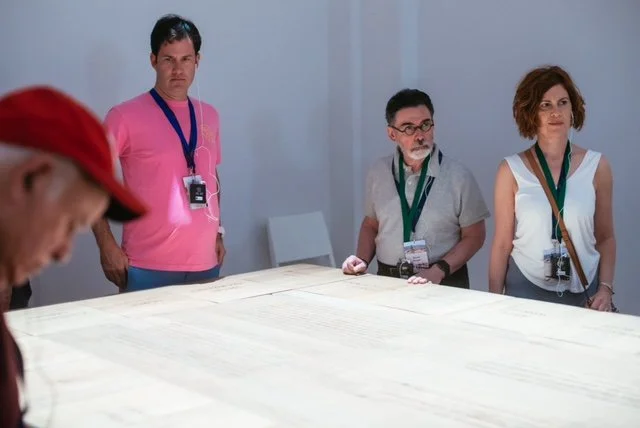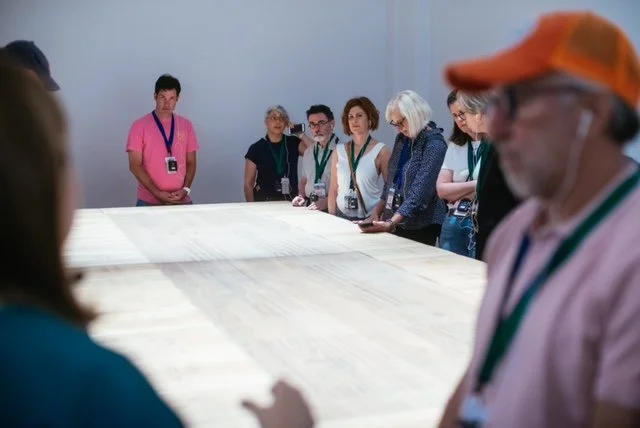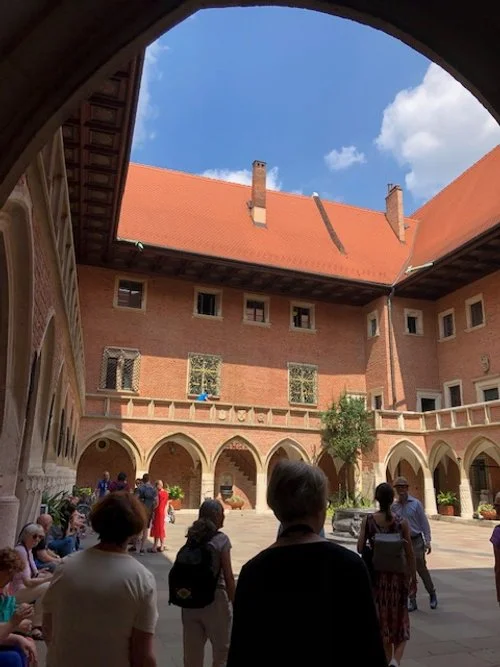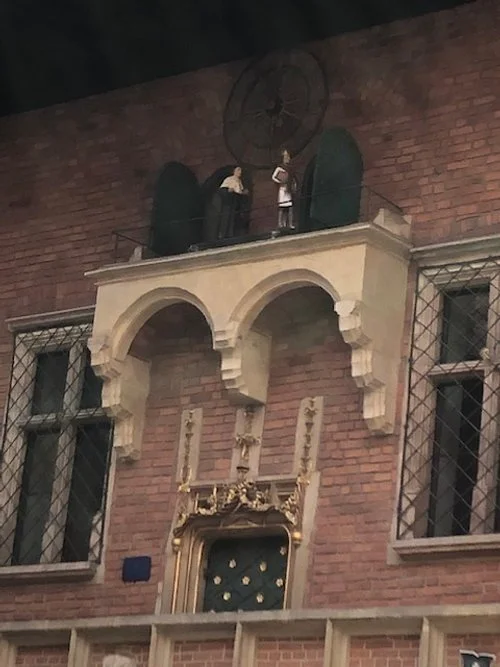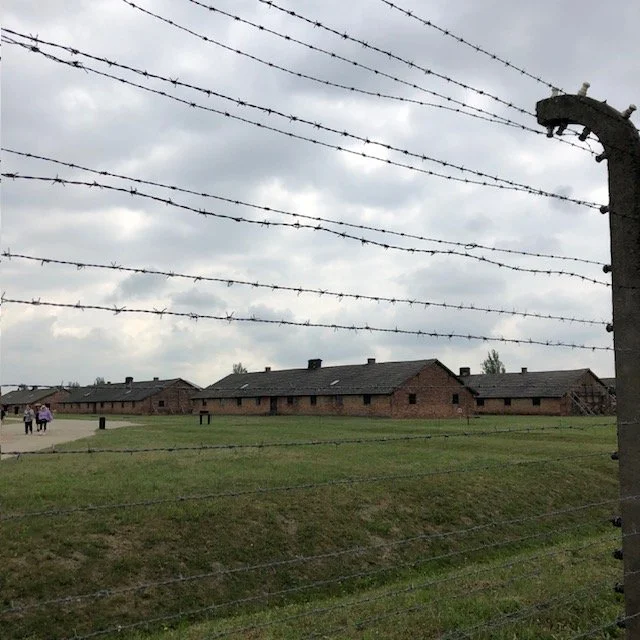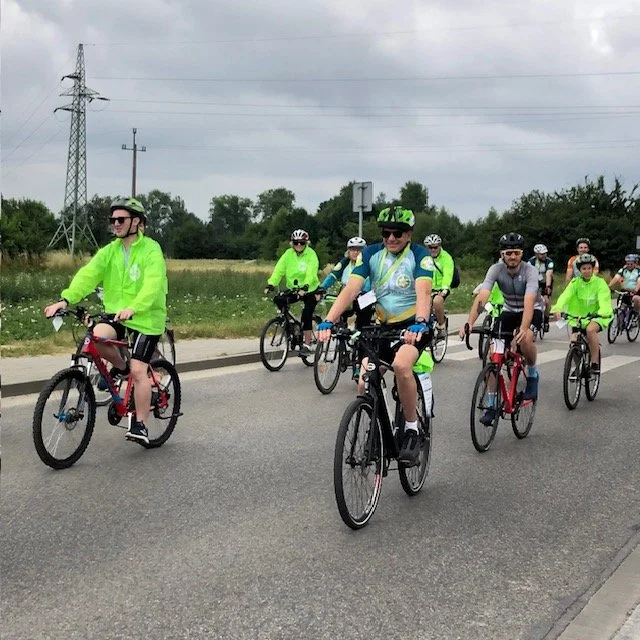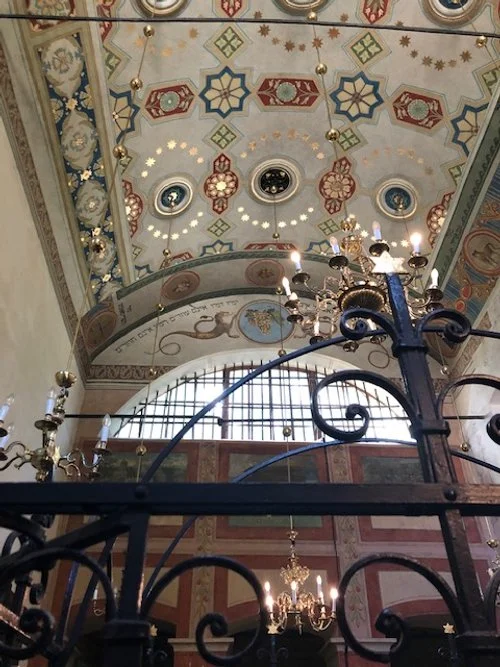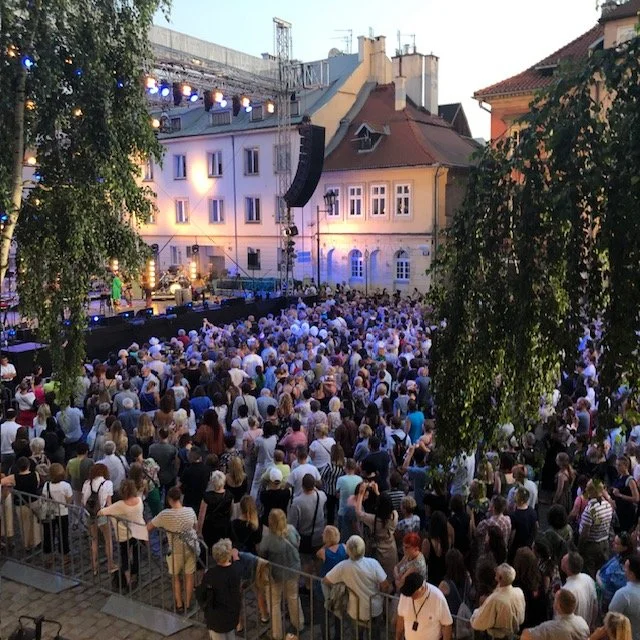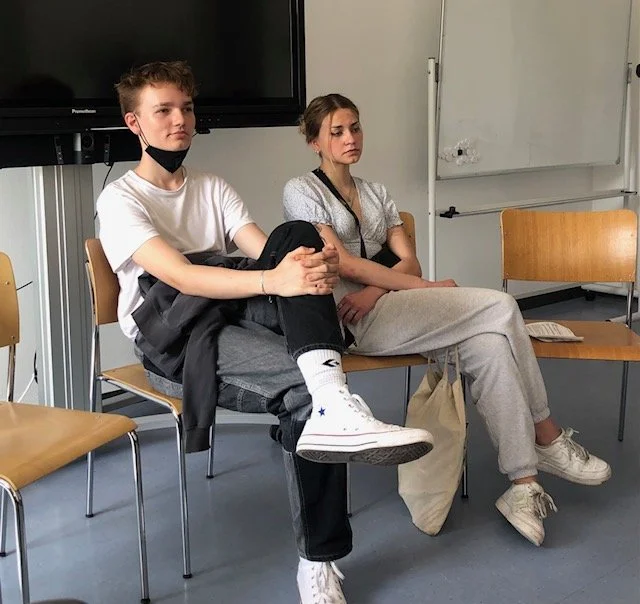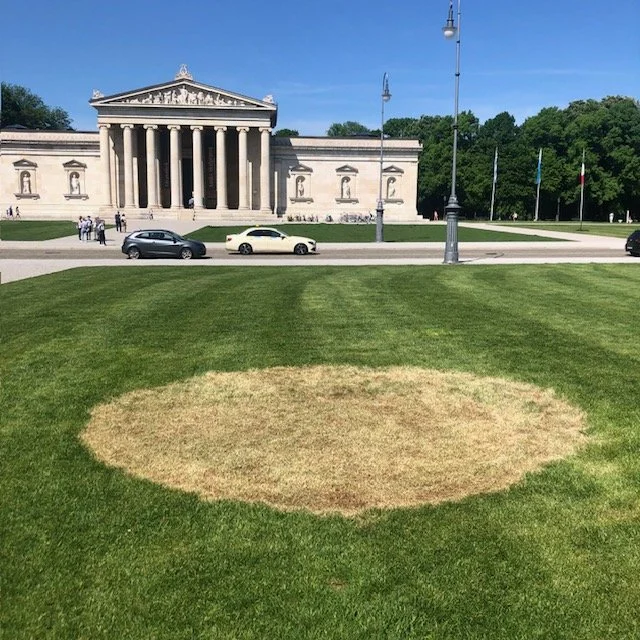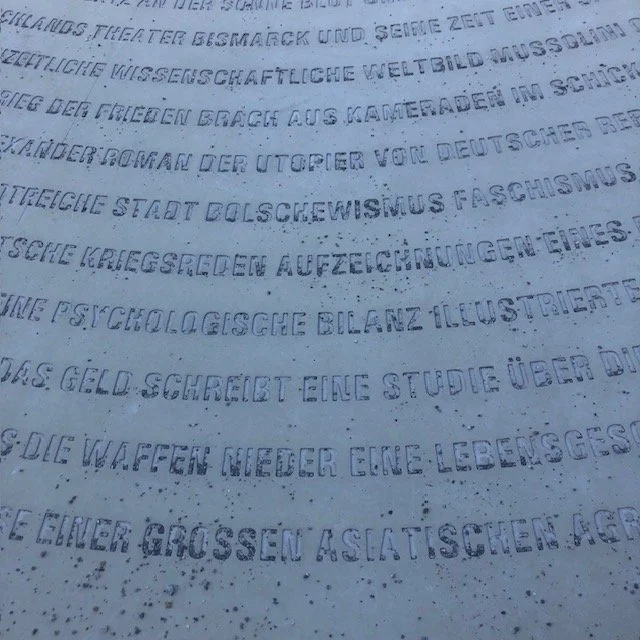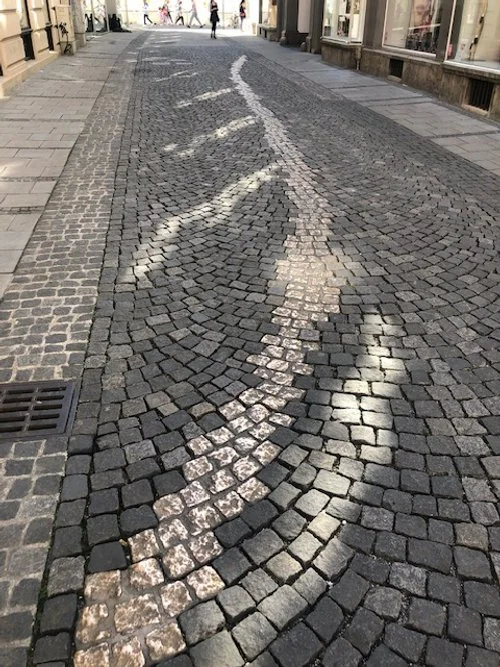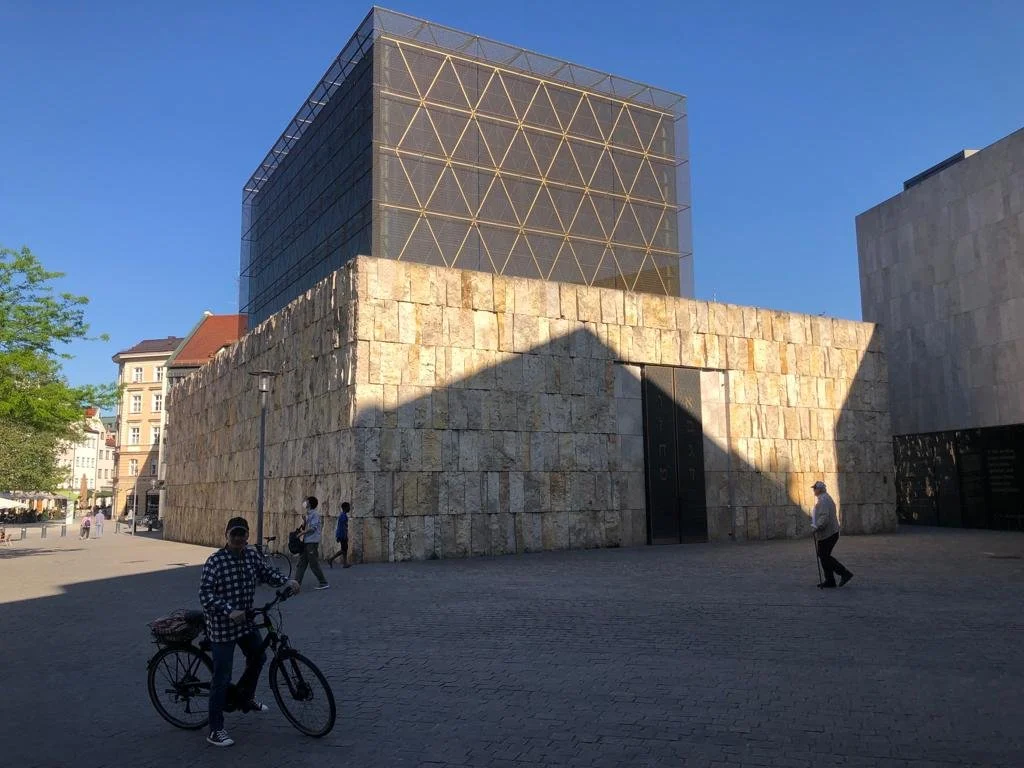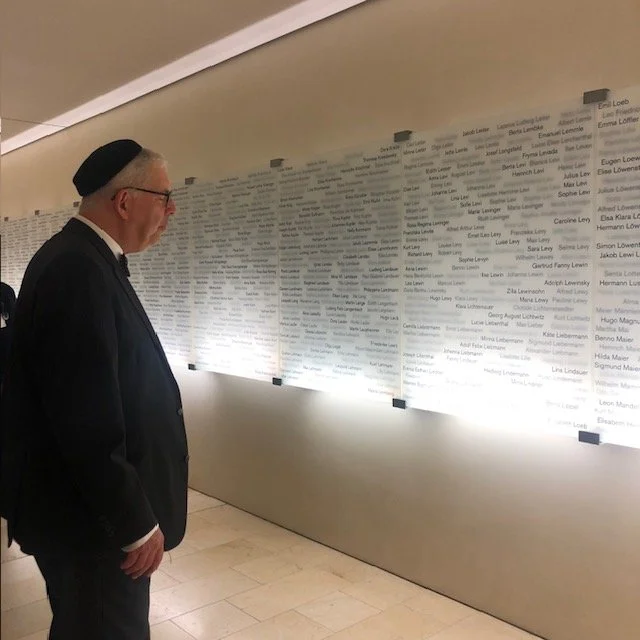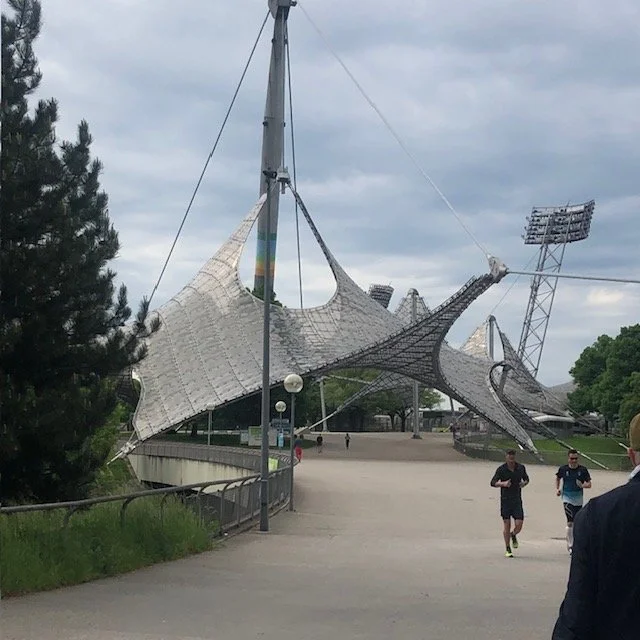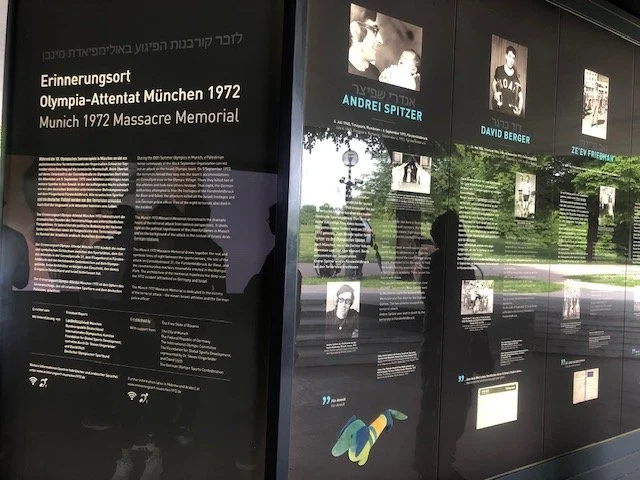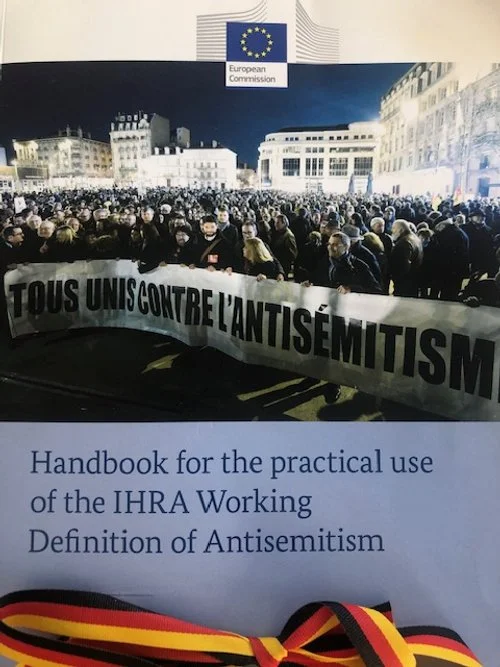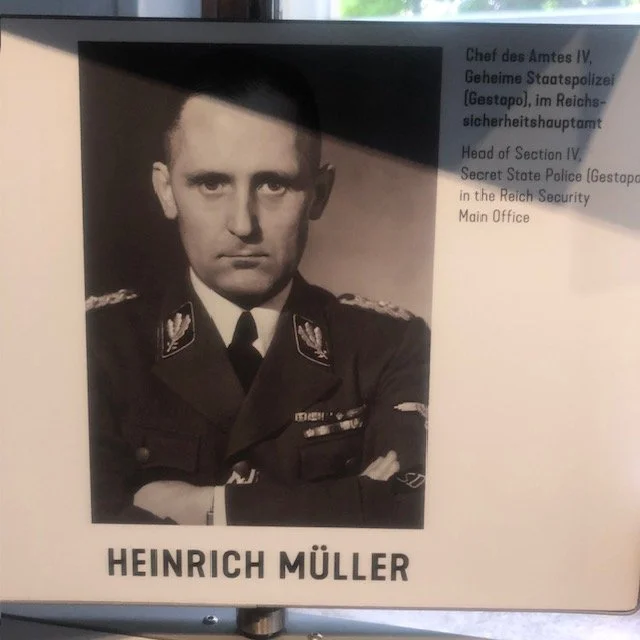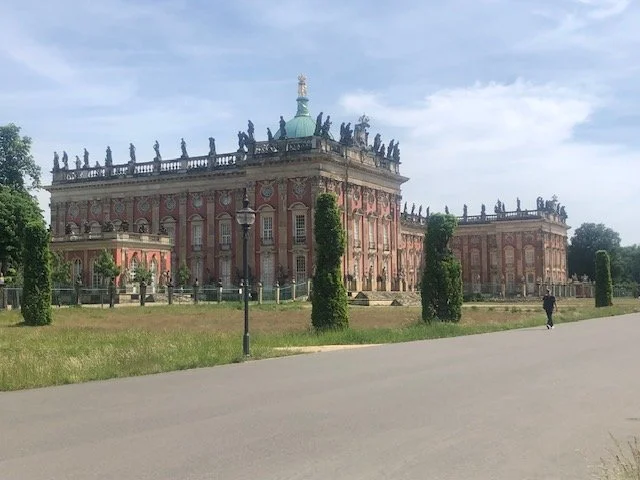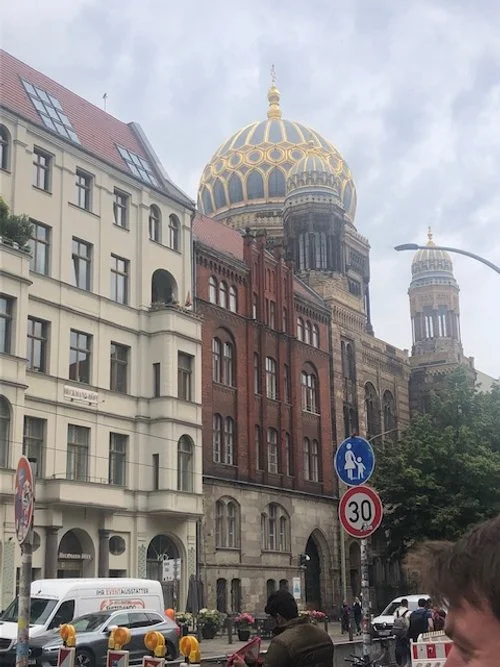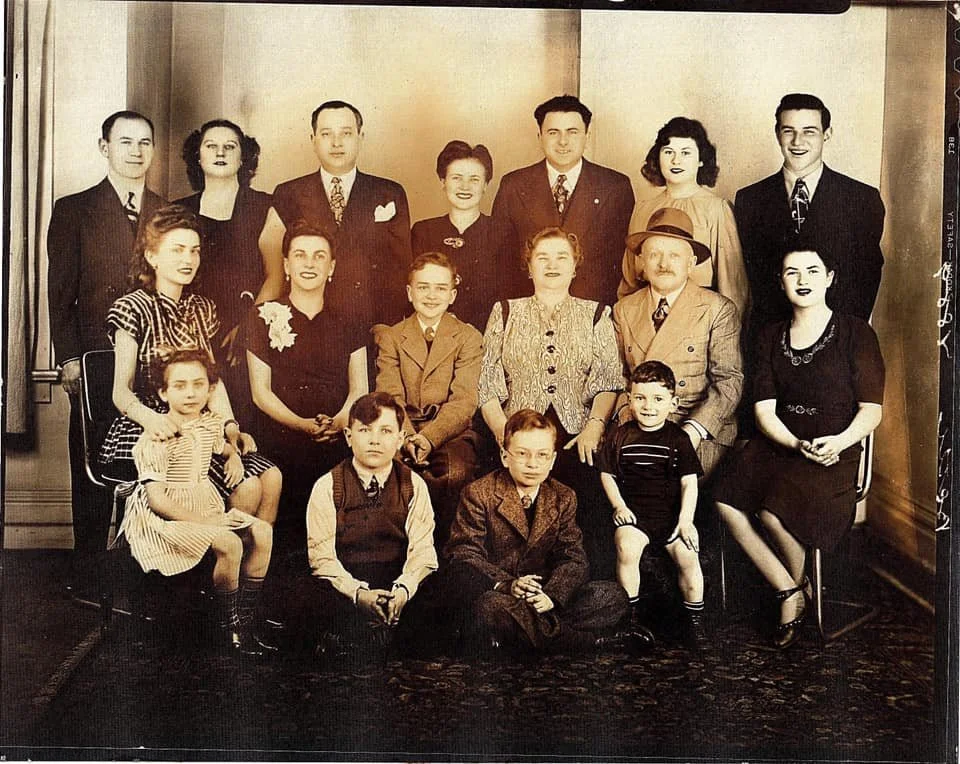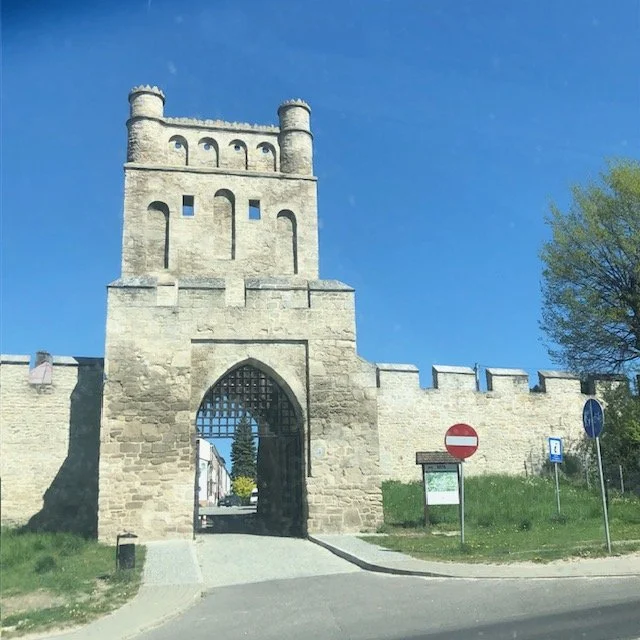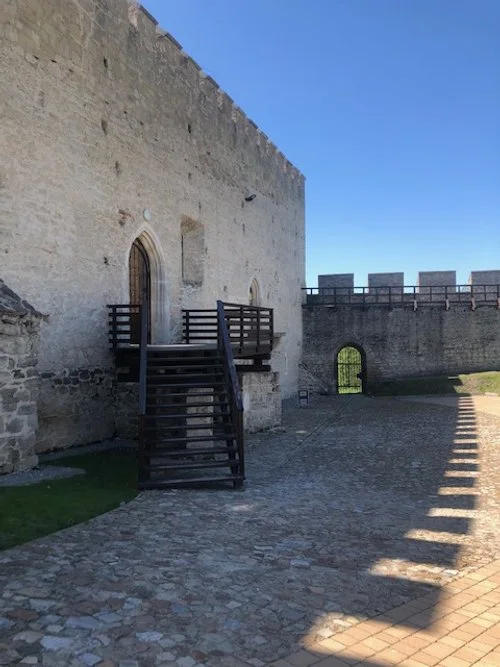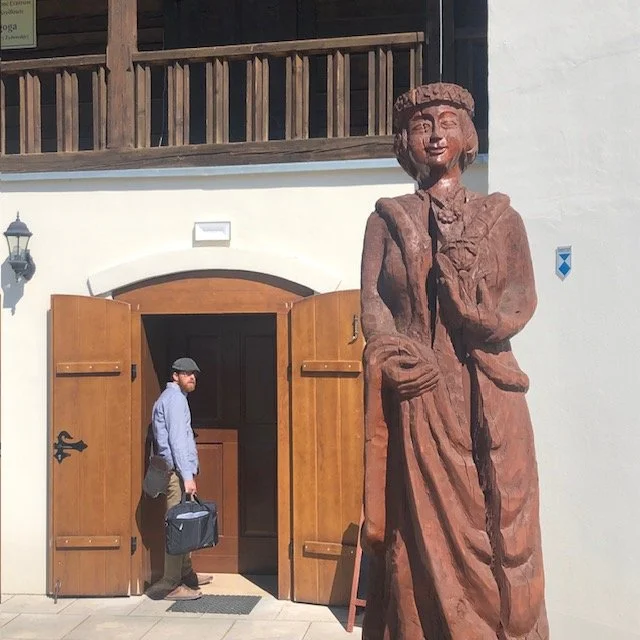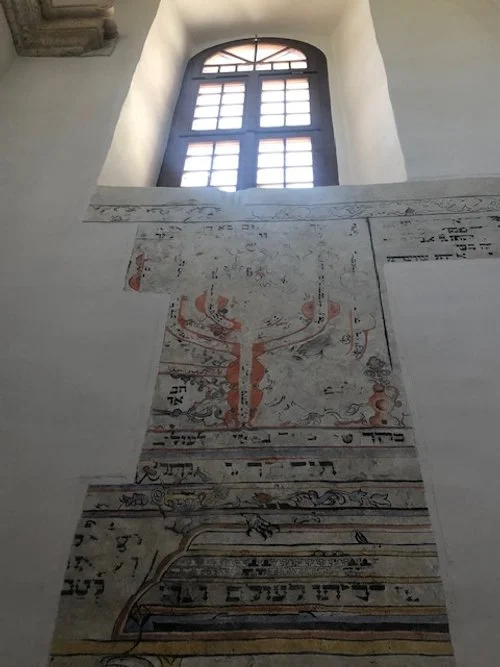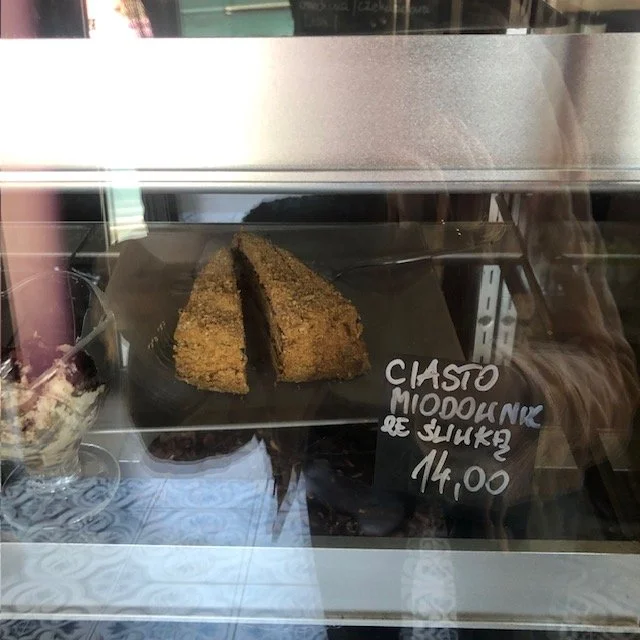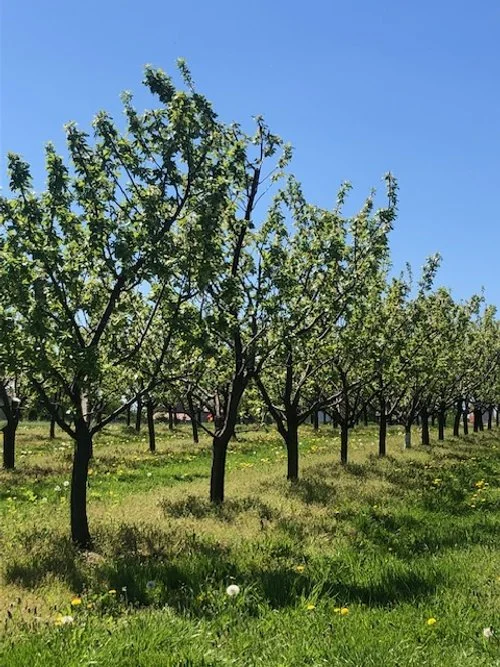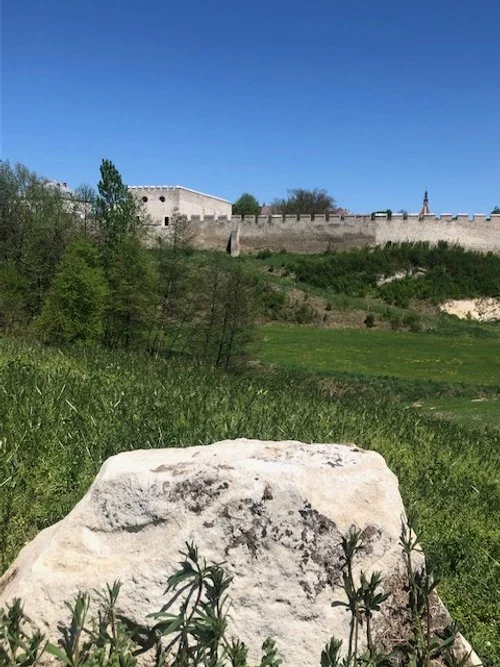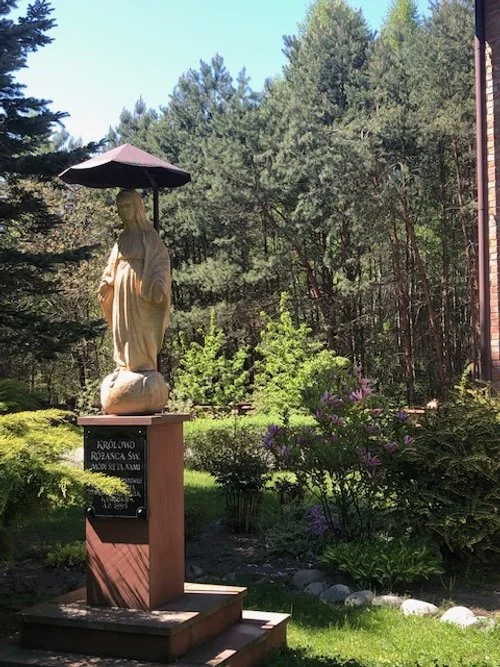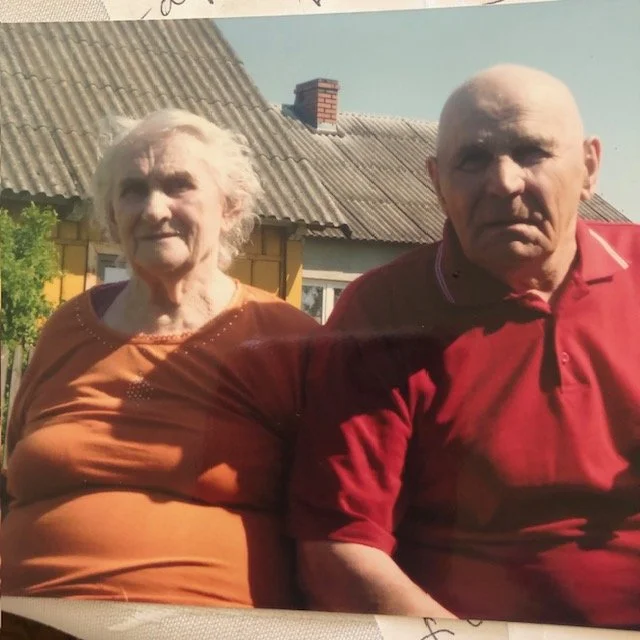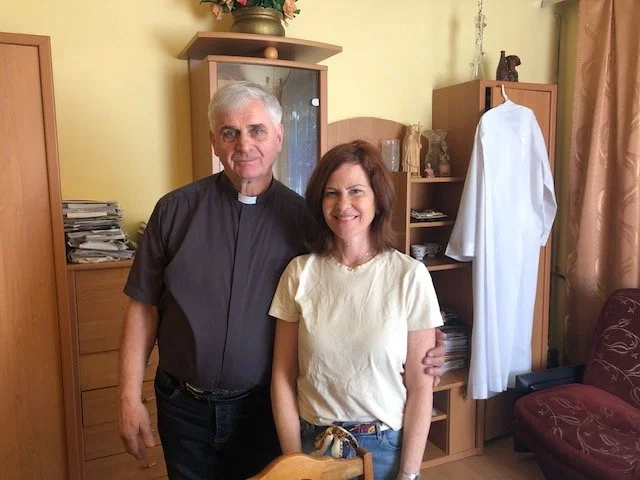Grateful for new friends and allies
Bridges for Peace event at Timothy Eaton Church in Toronto
with allies Bonnie Goldberg, Janice and Harry LaForme and Michael Osborne
Happy to join about 40 allies and Jewish organizations to form ALCCA, the Alliance of Canadians Combatting Antisemitism. United, we’re ready to fight back against antisemitism. Visit www.alcca.ca to sign up for specific action alerts and important updates! Kudos to Mark Sandler for founding this important coalition of Jewish, Muslim, Indigenous, Catholic and other diverse leaders - students, educators, parents, academics, lawyers and doctors - guided by the principles of coexistence and working together, respectful dialogue, rejection of extremism and protecting our children and their right to express their identities without fear.
Recently, Canada’s Special Envoy Deborah Lyons and 35 international counterparts and entities met in Buenos Aires, Argentina to mark the 30th anniversary of the AMIA terror attack and to announce their Global Guidelines for Countering Antisemitism. To read the guidelines, click on this link:
Global Guidelines for Countering Antisemitism - United States Department of State
Countering the surge of contemporary anti-Jewish hate
Here are some of the important points about contemporary antisemitism:
Bad actors are located both abroad and domestically
There is specificity in the attacks and hate crimes on Jewish individuals and institutions
The alarming rise in these crimes has created a climate for Jews reminiscent of the ‘20’s and ‘30’s
Social media spreads this hate in an instantaneous way, unlike in the past
On May 24th, Ambassador Deborah Lipstadt, US Special Envoy for Monitoring and Combating Antisemitism, held a virtual debrief session for the Jewish community. In it, she explained why antisemitism is a threat to democracy and national security in the US and abroad, and delineated ways to address this global problem.
Deborah Lipstadt
Here are some important points and strategies raised to counter contemporary antisemitism:
Bad actors are located both abroad and domestically
There is specificity in the attacks and hate crimes on Jewish individuals and institutions
The alarming rise in these crimes has created a climate of fear reminiscent of the 1920’s and ‘30’s
Social media spreads this hate in an instantaneous way, unlike a century ago
Consider the sources of media or social media posts and whether they are reliable
Governments should care about this hate and act vigorously to counter it
Alliances with other diverse groups are vital to counter this hate
The denial and silence of some human rights organizations about the events of October 7th is shocking, as is support of Hamas, a designated terror organization in the US and Canada
This support is unacceptable and needs to be addressed and confronted
Progressive Jewish women should not support Hamas and its crimes and oppression of women
Government and other leaders need to call out anti-Jewish hate wherever, politically, it appears
Antisemitism does not appear, like other forms of hate, on a spectrum, but rather in a horseshoe shape, where both left and right extremes converge, using similar tropes
There are laws in place that need to be enforced when broken and when violence is happening
There need to be consequences for breaking these laws
Antisemitism is often utilitarian, used for ideological reasons and political gain
Each country needs whole society and whole government approaches with strategies
Governments need to issue plans to carry out these strategies to root out systemic hate
Antisemitism threatens all people
Education about antisemitism and the global threat it poses is essential in the fight against it
It is important to emphasize the beauty, history and contributions of Jewish experience and culture so as not to allow others to determine Jewish identity
Above are some books by Ambassador Lipstadt about contemporary antisemitism. Holocaust denial and distortion, as well as Holocaust inversion - equating Nazis with their victims - are pernicious, common manifestations of antisemitism on both the right and left extremes of the political spectrum
Deborah Lyons, Canada’s Special Envoy on Preserving Holocaust Remembrance and Combating Antisemitism, has announced she is developing a Canadian handbook for education about, and the practical use of, the IHRA working definition of antisemitism, adopted by Canada in 2019, in all government institutions including educational ones, similar to the one below, used in the EU.
Remembering Together
Today, on the 81st anniversary of the Warsaw Ghetto Uprising, I think back to June 2019, my first trip to Poland. Our Taube Foundation tour was led by none other than renowned scholar, Dr Deborah Lipstadt, who now serves as US Special Envoy for Monitoring and combating Antisemitism.
On the 81st anniversary of the Warsaw Ghetto Uprising (War Hero monument, above), I think back to June 2019 and my first trip to Poland. Our inaugural Taube Foundation Jewish Heritage Tour was led by renowned Holocaust scholar, Deborah Lipstadt, who now serves as US Special Envoy for Monitoring and Combating Antisemitism. The trip was a most memorable one. Our first stop in Warsaw was the POLIN Museum of the History of Polish Jews for a private tour led by distinguished scholar and Chief Curator of the Core Exhibit, Barbara Kirshenblatt-Gimblett, a native of Toronto, below right, with Deborah.
The museum traces the story of the Jewish people over their thousand-year sojourn in Poland. Legend has it that when the first Jews arrived there in the Middle Ages, so stricken were they by its attributes that they said, Po Lin , which in Hebrew means, Let us stay here. And stay they did, for a millenium, building many communities, and contributing much to the growth and development of commerce, the arts, science, and technology until the upheaval of World War II and the Holocaust ‘s devastation of a people and culture.
Next stop was the Jewish Historical Institute where we perused the Ringelblum Archive. This material includes many hundreds of writings that were recorded during the war and buried underground in milk cans in the Warsaw Ghetto and later retrieved - a priceless collection and window into a culture that was virtually obliterated along with the 3 million Polish Jews who perished in the Holocaust. To learn more about the fascinating story of historian Emanuel Ringelblum and the Oyneg Shabes Archive, see the film Who Will Write Our History based on the book by scholar Sam Kassow.
In Krakow we were joined by scholar and guide Tomasz Cebulski who escorted us across the massive historic market square and on until we reached an important landmark and institution, and his alma mater, Jagiellonian University. As he explained, when the Nazis entered Poland they made Krakow their seat of power, and one of their first tasks was to take over the university, expel all the Jewish students, round up all Jewish professors and cart them off to concentration camps. Below, drawing of Sonderaktion Krakau, November 1939.
A visit to Auschwitz-Birkenau State Museum was a powerful and somber experience. Led by Deborah and Tomasz, we toured the grounds, went inside existing barracks, saw hundreds of photographs of prewar Jewish families, piles of shoes, glasses and human hair, the Book of Names and mounds of ashy rubble inside the infamous gates. The final image, below right, is one of hope - a group of students wrapped in blue and white.
As we left the site, a group of cyclists rode by, a contingent of the annual Ride for the Living, which commemorates the Holocaust and honours the renewed Jewish community of Krakow.
Ride for The Living 2019
The finale and a highlight of our tour was visiting Sandomierz, a centre of Jewish life in Krakow for centuries. The beautifully restored and still functioning Remah Synagogue of famed Rabbi Isserles is very special, and the annual Jewish Cultural Festival draws tens of thousands. Many Poles are newly discovering their Jewish roots. On Friday evening we participated in a communal Shabbat Dinner, courtesy of JCC Krakow.
Above, from left - ceiling of restored Remah Synagogue; shabbat candles and communal dinner, JCC Krakow; Jewish Cultural Festival of Krakow crowds
#RememberingTogether #WarsawGhettoUprising #LetMyPeopleGoNow
Darkness and light
I travelled to Germany in May 2022 to join a tour led by Rabbi Aaron Flanzraich. It turned out to be a journey of memory, reflection, dialogue and rebirth. Above from left, Stolperstein memorial plate, skylight of Dachau Jewish Memorial, dome of Neue Synagogue, students participating in a dialogue about coexistence.
A walking tour in Munich stopped at Konigsplatz and its Memorial to the Burning of Books in 1933. Above, from left - a circle of burnt grass, list of book titles and memorial plaque. The burnings, a campaign conducted by the German Student Union in cities across Germany and Austria, targeted books viewed as subversive or representing ideologies opposed to Nazism. Authors included Albert Einstein, Helen Keller and Ernest Hemingway. Right, the golden pathway of Shirkers’ Alley, a tribute to those who opposed Hitler.
We visited the beautiful and modern Ohel Jakob Synagogue and community centre, which serves the Orthodox community and houses its own memorial to the murdered Jews of Munich. Above, from left - the synagogue exterior, memorial wall, corridor of names of Holocaust victims, and shul interior.
The following day began at the Memorial to the 1972 Munich Massacre in Olympic Park, which commemorates and educates about the brutal ambush, taking of hostages, and ultimate murder of eleven Israeli athletes and coaches and one West German police officer by members of Black September, a Palestinian terror organization. Above right - a scene from the 1936 Olympic Summer Games.
Next, we traveled to the Dachau Concentration Camp Memorial Site. Inside the Jewish memorial, Rabbi Flanzraich gave a short but powerful sermon and led us in reciting Kaddish, the traditional Jewish prayer for the dead.
The highlight of a very difficult day was its culmination - a meaningful dialogue with local students about coexistence, tolerance and diversity, and what they learned on their tour of Dachau. All were heartened and galvanized with a new sense of purpose, understanding, diligence and hope towards the future.
Next stop: Berlin, where we visited the German Federal Foreign Office and were addressed by Ambassador Felix Klein, Commissioner for Jewish Life in Germany. He explained his principle mandate of ensuring compliance with the IHRA Working Definition of Antisemitism in all government institutions, particularly educational ones, in order to address the alarming escalation of harassment and threats of violence targeting Jews in Germany. An inspiring and vital example for other countries to follow.
By the shores of a scenic lake, we visited The House of the Wannsee Conference museum, site of the infamous January 1942 meeting to plan the Final Solution by leading Nazi and SS officials. From right, Gestapo chief Heinrich Mueller; an example of antisemitic graffiti on a shop window in Oslo of 1941 calling for the expulsion of Jews to Mandatory Palestine; lake view; and facade of the mansion.
We wandered through the exquisite grounds of Sanssouci Palace, then headed to the University of Potsdam and its School of Jewish Theology, where we met with rabbinical students and Rabbi Aaron presented a Torah scroll donated by Beth Sholom Synagogue in Toronto. It was a very moving experience to witness and contribute to the continuation of Jewish life, learning and leadership in 21st-century Germany.
Back in Berlin, some striking architecture. Above from left - the Daniel Libeskind-designed Jewish Museum with a mural of notables and Shalekhet - Fallen Leaves, and Monument to the Murdered Jews of Europe.
Final scenes that left a feeling of renewal, from left: the lovely rebuilt Neue Synagogue with its majestic dome, a group of schoolchildren at the memorial in the restored Old Jewish Cemetery, an idyllic scene in the Tiergarten, and the restored Beethoven-Haydn-Mozart Memorial of 1904, tribute to classical composers.
Heritage
Family History Research - Poland 2022
In spring 2022, I took a journey into the past and visited the place in southeast Poland where my paternal grandmother, Chana Hindl, came from. My historian-guide Matan took me on a tour of the area, and I was surprised at what we found.
Our first stop was Szydlow, where Jews had lived since the 14th century, and where my great-grandfather Berel was born. It is a medieval walled city with a castle and a newly restored synagogue, now a museum (white building, above right). The entrance is guarded by figures of King Casimir III the Great, below left, and his legendary companion Esther, a Jewish woman of great beauty and intelligence, believed to have influenced him to build the synagogue. Its interior is quite lovely, with gothic arches and windows. Below right, see part of its gallery of historic photos.
While sad that the synagogue is no longer in use as its historic, once bustling Jewish community was decimated in the Holocaust, I am grateful this important landmark has endured and is now restored. Some beautiful and ornate original details and artifacts remain, including painted murals with Hebrew prayers and images, lamps, carved panels of biblical scenes, headstones and a wall cache for donations, see below.
Our day guide was Pavel, a professor and priest who was born in the area. After we toured the castle and synagogue, he brought us to a small cafe where we sampled some local delicacies, plum parfait and miodownik - honeycake (also my grandfather’s original surname, changed when he arrived in Canada to Madonik). Plums and plum brandy are a local industry and the area is abundant with plum orchards.
Then Pavel took us to a church in town which had an unusual feature - an iron magen david, or Jewish star, on its door. We couldn’t decide what it meant - could the building be a former synagogue? Next, we went outside the city walls to a large, open field sparsely studded with stones. At one end near the fence was a pile of rocks, headstone fragments and a wooden marker.
Pavel explained that this area was the Jewish cemetery and that local people have begun to return the headstones and fragments, which had been removed during the Holocaust and used for construction. It was heartening to learn that he is spearheading this project to restore and preserve the cemetery, in order to honor the memory of the historic Jewish community of the town.
Next on our itinerary was the most surprising and important feature of the day. Pavel took us to a small village called Rakowka, near my grandmother’s town, Rakow.
The setting was lovely, green and peaceful as we approached a small church and residence. A smiling man named Josef Grabda, also a priest, graciously welcomed us into his home and to a lovely prepared lunch. As he spoke no English, I waited patiently for Matan to translate what my three companions were very animatedly discussing. It was an amazing story of bravery and compassion that Josef relayed to us as we ate our meal and lingered over glasses of tea.
In July 1943, Josef’s father Withold and grandfather Jan, the town elder, saved the lives of two Jewish cousins named Rosenfeld, tailors whom they recognized from the Rakow market square before the war. The Jewish men had escaped off a train bound for Auschwitz by cutting a hole in the floor of the cattle car with a saw fragment concealed in a shoe. They survived at first by sewing for villagers, but soon needed a hiding place which was provided by Jan and Withold, who kept them in their barn until the end of the war. Grabda father and son were honored by Yad Vashem as Righteous Among the Nations in 1985. I was heartened to learn this story, as Josef proudly showed us the Yad Vashem certificate and correspondence (above from left).
Above, from left, an aerial photograph of the Garden of the Righteous at Yad Vashem marked with locations of trees named for the honorees; Josef’s late father, Withold Grabda, and mother; Sam Rosenfeld and family in Netanya, Israel with whom the Grabdas still remain in contact; me with Josef Grabda.
I was very moved and grateful to learn that Josef teaches his students about his family’s important act of heroism and its growing relevance today. His father, grandfather and grandmother risked their lives, and the lives of family members, to save the Rosenfeld cousins from certain death because they knew it was the right and moral thing to do. An important lesson for all.
